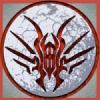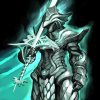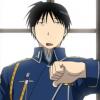Search the Community
Showing results for tags 'oathpact'.
-
We know that the Oathpact was between Honor and the Heralds. What we don't know is exactly when the Oathpact was formed. Was it in response to Odium showing up? Was it in anticipation of this event? Or did it have absolutely nothing to do with Odium? Here answer 1. Here answer 3 Here answer 4. Here answer 6. These all show that Odium had no part of the Oathpact, and his being stuck on Roshar is an indirect result of it. Now WAST time. The creation of The Dor, and the fight with Ambition surely could be felt by the other Vessels in the Cosmere. It could have become obvious that Odium was hunting Vessels and destroying them. While not diametrically opposed like Ruin and Preservation, there could be some issues with Honors focus on Permanant Bonds, and Cultivations more change centric intents. As lovers, they should have become aware of these issues fairly early after moving in together (on Roshar). Endowment splits off a splinter of herself in every Returned. The contests that selected the Heralds were designed to select 10 individuals. While some were martial in focus, not all necessarily were. Chana is noted for her great speed for instance. While Honor obviously presided over them, perhaps Cultivation was also a judge. Knowing that Odium would be coming, Honor decided to self splinter. This allowed him to focus his intent into specific individuals with the traits he was looking for, rather than the randomness of being shattered. A bunch of mini-champions if you will. While it might make him a bit weaker overalls to spreading out his power overall, it might make him more resilient in the end because of the individuals would be known. He might have forged a separate pact with Cultivation prior to this where she would also do the same to a lesser extent with the chooses, thus giving her a seat at the judgement. This would have allowed Brandon to state that the Oathpact was between Honor and the Heralds, and not mention her. Now if each was looking for specific traits in the contestants, it would make sense if these became ingrained in the Vorin religion. We have this nice table of essences and relations to Heralds from the Vorinn religion. Divine Attributes Primary Divine Attributes of Protecting, Just, Brave, Loving, Learned, Creative, Wise, Resolute, Dependable, and Pious. I feel that I can tie all of these attributes to something Honor would be looking for in someone to hold part of his power. Secondary Divine Attributes of Leading, Confident, Obiedient, Healing, Giving, Honest, Careful, Builder, Resourceful, and Guiding. I feel I can tie all these attributes to Something Cultivation would be looking for. The individuals selected were to lead the people by being living representative of these ideals. Honor splintered off a fairly large bit of Investature to each, and Cultivation a smaller. But this infusion of Investature would seek to enhance these traits in each individual over time becoming more and more a part of their intent. Since they had strength in particular focuses these would be exemplified. Now this large amount of Investiture would probably have affected their life spans as we have seen on Nalthas and on Sel. Having extremely long lived individuals exemplifying ideals should lead to a highly stable society. Thus the Tranquiline Halls mythology. An almost to perfect society, yet not stuck on the now but also the future do to Cultivations influence. The Heralds had to make the Oathpact with Honor, but what was the Oath. TO UPHOLD THE IDEALS FOR AS LONG AS THEY LIVED. The Reward extremely long life. They would not be Heralds of War. But Heralds of Life. Heralds of Ideals. So then Odium shows up. We have the First Desolation. THEY ALL DIE. But due to the splinters they hold, they all become Cognative Shadows. Odium is set back, but these little fairly helpless Heralds are now trapped. They have held a splinter so long they have been warped on the SR to be almost programmed to stay and uphold these ideals. So each time a Desolation starts they move back into the PR and fight for these ideals against the one who killed them. Because of this Odium is stuck. Every time he tries to destroy Honor, they come back like Army ants attacking his flanks. And by coming back they inspire others to the same ideals. Thus indirectly trapping him in Roshar. He sences that Honor is weak, so his hatred won't let him leave, but every time he attacks, the Heralds show up to buffer honors strength. Thus he starts a long game as I outline in my 10 Heralds 10 Fools thread.
- 6 replies
-
4
-
- divine attributes
- roshar
-
(and 2 more)
Tagged with:
-
Hi this is my first post so here goes. i recently reread the prologue to way of kings to see what I noticed. Here are the things I only just picked up on: -it seems jezrien as king of the herelds was not based on his position as a herelds but on his preheraldic life there he was a king and so he brought his regal attitude into his life as a hereld -this tells he and the herelds had some sort of regular life beforehand and some event caused the creation of the oathpact -Based on the amount of times Brandon had to explain to questioners the oathpact was between honor and herelds not odium it seems I wasn't the only one who was confused how their agreement with honor gets them repetitively sent to idioms tirture.clise reading leads me to only one conclusion the oathpact must be about their commitment to honor to repetively engage in fight on behalf of all mankind which in and of itself gives odium some hold over them -they gain out of the oathpact some sort of vague minute chance of victory that they have never acheived. When they our leaving the iathpact when jezrien tries to claim as long as tank is still there it will hold he is saying they are not forfeiting that chance completely even though both he and kalak don't really believe tank alone can do what they all together could not -based on this when jezrien says who knows maybe it will turn out to be true(about the lie they will tell mankind about victory) he is saying that not as a product of their attempt to break the iathpact but as an excuse they will give for just leaving. They will say they win -this that there is even a need to lie tells me the people know something if the oathpact so there is a need to rationalize to them why they are not returning to purgotory so what do you guys think an I reading this right -oh one last favorite theory of mine.it is crystal clear to me that when adolin makes reference to the ironclad traditions in risharof duals and the rights of the champions to make binding demands that these traditions are based on that cryptic reference honor naked to their ability to get odium to pick a champion and then be bound by the tesults love it or hate it?
-
Hi this is my first post so here goes. i recently reread the prologue to way of kings to see what I noticed. Here are the things I only just picked up on: -it seems jezrien as king of the herelds was not based on his position as a herelds but on his preheraldic life there he was a king and so he brought his regal attitude into his life as a hereld -this tells he and the herelds had some sort of regular life beforehand and some event caused the creation of the oathpact -Based on the amount of times Brandon had to explain to questioners the oathpact was between honor and herelds not odium it seems I wasn't the only one who was confused how their agreement with honor gets them repetitively sent to idioms tirture.clise reading leads me to only one conclusion the oathpact must be about their commitment to honor to repetively engage in fight on behalf of all mankind which in and of itself gives odium some hold over them -they gain out of the oathpact some sort of vague minute chance of victory that they have never acheived. When they our leaving the iathpact when jezrien tries to claim as long as tank is still there it will hold he is saying they are not forfeiting that chance completely even though both he and kalak don't really believe tank alone can do what they all together could not -based on this when jezrien says who knows maybe it will turn out to be true(about the lie they will tell mankind about victory) he is saying that not as a product of their attempt to break the iathpact but as an excuse they will give for just leaving. They will say they win -this that there is even a need to lie tells me the people know something if the oathpact so there is a need to rationalize to them why they are not returning to purgotory so what do you guys think an I reading this right -oh one last favorite theory of mine.it is crystal clear to me that when adolin makes reference to the ironclad traditions in risharof duals and the rights of the champions to make binding demands that these traditions are based on that cryptic reference honor naked to their ability to get odium to pick a champion and then be bound by the tesults love it or hate it?
-
So, I was discussing with several people on the Cosmere Discord, and I came up with a question about the Oathpact. I wanted to ask the wise members of the Shard what they thought. Do you consider Heralds to be an integral part of the Oathpact? Or is it more based upon the Honorblades? Is it both?
-
From the album: A Smidgen of Stormlight
Also made in 3DS Max. I also used the plugin RayFire for the cracks.- 6 comments
-
12
-
- final desolation
- heralds
-
(and 2 more)
Tagged with:
-
So, I want to run this by everyone to see if I am repeating something that is generally understood. Odium comes to Roshar. The goal is to Splinter Honor. Honor knows this. He lays a trap. The cost of possible Splintering (edit: of Honor) is that Odium must be bound to the Roshar system and therefore not be able to leave and chase other Shards. Something Honor would do - put himself between the danger and those it pursues. The Oathpact suddenly makes sense. The way to keep Odium bound to a system is to have Odium Invest. How does one do it on Roshar? Give up its Investiture to create a lot of spren. The more spren, the higher one's Investment. So, Odium, by Oathpact, can battle Honor, but in the way that bounds him: by Investing in Roshar, and fighting the spren war. Basically, the voidspren, the Unmade, *any other object* Invested by Odium on Roshar, makes Odium's Connection to Roshar higher. Which is why there MUST BE multiple Desolations - Odium must be permitted to grow its influence on Roshar to the point of active war. And this is why, short of Splintering Odium himself, this must repeat - if Odium's influence on Roshar wanes, he leaves the system and goes after other Shards. So, Honor chooses to play a long and dangerous game with Odium, just like Preservation chose with Ruin. Also explains Hoid's "I sympathize with you, Dalinar, but what I seek to achieve and what you do are not one and the same, and *my* goals are more important!" Hoid wants Odium bound to Roshar. Odium whose influence is purged from Roshar is free to roam elsewhere. Hoid does not want it. The problem right now is that Odium has splintered Honor. Achievement unlocked. Now is the time to leave the system (or Splinter Cultivation and leave the system). To do this, there must be an all-out war that ends with destruction of all Odium's assets on Roshar (at the cost of a massive devastation), and frees him. TL;DR: Desolations and voidspren are the means of keeping Odium Connected to Roshar. Odium must be kept Invested. This obviously skims over a lot of things (like, why Heralds). But overall, what am I missing? Edit: It has been wisely pointed out that the Oathpact refers to the deal Honor made with the Heralds, not Odium. I struck that unfortunate phrase. The rest of the point remains salient: Honor promises Odium a chance to take him out, but Odium must Invest in Roshar to be able to Splinter Honor.
- 27 replies
-
9
-
- investiture
- spren
- (and 4 more)
-
I was thinking on the Oathpact and the Recreance for a while and I came up with this speculation: I don't know if what follows was already pointed out but I would like to read what do you think about it (though it's very far-fetched in some points and has few gaps). --- On the Oathpact, I think we can assume it's a pact between Honor and the Heralds. Tanavast gave them Honorblades and (maybe) immortality while the Heralds had at least two duties: 1) leading humans during Desolations; 2) keeping Odium at bay (trough suffering a lot of pain) between Desolations. I think duty #2 is "possible" according to the following quotes: - In the Prelude, Kalak says: - In Talenel Interlude, Taln thinks: - In the Second Letter it's said: So I think the Heralds talk of "torture" in a figurative sense: they suffer trying to hold Odium captive. When the Heralds can no more bear the pain, they return to Roshar (preparing humanity for the Desolation) while Odium regains his strength. Perhaps it's very arguable how the Heralds could keep a Shardholder captive (though suffering Hell) but maybe Honor lends each of them a fraction of his power while they are in Damnation. I don't know but let's pretend it's possible. After Aharietiam, the Oathpact is still valid and Odium is kept captive by Talenel. But, with only one Herald holding him, Odium had much more freedom than before. Now, I don’t know if in this condition Odium could flee from Damnation or if simply Taln withdrew from his duty but I think that, during the time of Recreance, Rayse freed himself and used this opportunity to kill Honor (maybe weakened from lending too much power to Talenel, in order to help him in keeping Odium at bay alone). After killing Tanavast, I believe Rayse had no much strength for fighting a Desolation but he tried anyway to further weaken mankind defense. He confronted the Radiants on the treachery of the Heralds and the possibility of fighting without their lead (likely meaning being destroyed by the Voidbringers). But Odium offered a treat: there would be no Desolation if the Knights Radiant gave up their positions. So the Radiants accepted and broke their oaths wile Rayse returned to Damnation, waiting for his opportunity (striking when men weren’t defended by Heralds or Radiants and Surgebinding was forgotten). I don’t exclude that (in this speculation) the death of Honor, that perhaps weakened the Nahel Bonds of the Radiants, had a part in their decision of stepping back. Now, in WoR it's said that only nine Orders out of the ten broke their oaths: I think that the latters are the Skybreakers: probably they are trying (from the Recreance until now) to kill other Surgebinders in order to keep the 'treat' with Odium and avoiding a new Desolation. The Order that didn't break his oaths could also have been that of the Bondsmiths: they (and their squires, because there were very few members) could have become Ardents and tried to unite Roshar in Vorinism trough the Hierocracy (against the threat of Odium). But I like the idea of the Skybreakers better. Thanks for reading until the end XD Sorry if my English was bad: it's not my native language.
-
Hello everyone, I've been Reading Brandon Sanderson for quite some time now. I have also been aware of this forum for a similar amount of time and decided it was time to sign up and partake of the discussion. Glad to finally be here! So, a couple of musings as I make my way through WoR for about the 10th time - Could Honour have ''cheated'' in the deal he made with Odium - we know there are Spren of both shards, was the original gambit that the he who gets the listners/humans etc to attract the most Spren essentially win. However Honour ''cheated'' and gave humans the Honourblades thus tipping the favour of the War in Honours favour? Could Kaladin be being unknowingly prophetic when he says ''I can't hold back the might of 10 armies...'' potential climax of the first 5 books? Finally, Teft is awfully knowledgeable, is Brandon going to throw a slight curveball and Teft is a Herald? I wanted to write these down before I forgot. Apologies if this is in the wrong area!
-
Now this is a theory that is mostly based on speculation but I wanted to see what other people think of it. Warning mindless rambling may happen at times, just stay with me. Now lets get to it. The Oathpact. We don't know much about it but I will quickly summarize what we do know. It is an oath by the Heralds that returns them to Roshar with each desolation Whenever the heralds are not on Roshar they are tortured It has been in effect for a long time- "Centuries, perhaps millennia" The Oathpact was broken The enemy who is most likely Odium was bound by it Honor is the one who most likely initiated it While that isn't much to go on I'm going to talk about not only how it effects the heralds, but also how that may have effected the Rosharian ecosystem, specifically the starting the highstorms. Now I'll start with a simple explanation of how the Heralds are important in the oathpact: I believe that they may have become bound to Odium. Now this would explain why they are tortured, after all what else would an entity literally named Hatred do to it's enemy's? Now the reason I was lead to this conclusion was in part because of the fact that shards tend to behave according to the principle of intent. (http://www.17thshard.com/forum/topic/369-theory-the-principle-of-intent/) Now Torture is not Honorable, and I would love to hear anyone argue otherwise. But Odium is more than capable of torturing people. In fact he probably does it for fun. I mean if you hate someone then you want to torture them so it fits his personality perfectly. Now I hope I haven't lost you because this is where it gets interesting. What if Honor, Cultivation, and Odium were all originally on Roshar? Now Odium hates everything, or at least he probably does. So Honor and Cultivation, in order to create a society that wasn't constantly in danger of being destroyed, they had to get rid of Odium. So give odium something to focus all his hate on, preferably something he knows that you like (the heralds) and give him his own planet and then hope he leaves yours alone. And if he ever comes back make him bring back the Heralds. It's like giving the bully at school your toy and then just pulling out a different one after he leaves. Now Odium Isn't stupid so I'm sure he threw in some of his own conditions, namely getting to leave a small part of himself on Roshar mainly in the form of voidspren. Now that probably seemed like a good deal, after all what could things with no, or at least very little, physical form do? Well a lot as it turns out. Odium could insert the voidspren into the listeners and take control of them, like how Ruin uses hemalurgy. But every time he moved enough of his sentience to Roshar to control the listeners, then the Heralds would return to. This would explain why they always show up right before a desolation, and also why leaving just one of them could end the desolations, Odium still has one of them to Hate. And perhaps having only one of them return stuck Odium in a sort of limbo. He couldn't fully leave because he didn't have all the heralds but he also couldn't return because he couldn't bring the heralds with him as they were already their. Now all of this ties into highstorms because when Odium returned the first time Honor needed a weapon to fight back with. So give the heralds the ability to access surges(the spren) and give them readily available fuel to power those surges(stormlight). Now I know their will be those who say "well what makes you say that?" "why couldn't there have always been highstorms?" Well the answer to that is that Roshar was once much more earthlike. Shinovar across the whole planet kind of deal. This would explain how there were humans in the first place. Shards have access to a lot of knowledge about the workings of the world. Don't believe me, go read what Sazed writes in the Hero of Ages. My point is Cultivation and Honor wouldn't put something as vulnerable as Humans on a land where everything is constantly buffeted by storms that are as big as a continent and as powerful as, well huricane times ten. Therefore Highstorms must come after humanity and since the Heralds were the first of humanity... well you get the point. Shinovar is the only part of Roshar sheltered from the Highstorms and that is the reason it is so earthlike. Sinovar did not evolve to become earthlike. everything else evolved to weather the storms. I know there isn't much evidence to support that but it's the best theory I could come up with so feel free to poke holes and give me feedback.
-
Hey all, so I'm thinking the Oathpact might be more simple than we've, or at least I've, given it credit for. The way I see it, Honour and Odium have a chat. Maybe after Odium hits Braize and forces H/C to Roshar. Honour proposes a contest. He will pick ten of his best to face any trial Odium can throw at them, if they fail Odium gets a shot at Honour, or Roshar. Odium, being tricksy, rightly points out that Honour could just never said champions to face Odium's challenges. No challenge is no failure, and thus Odium never gets a chance. Honour is like "fine, if they don't return after a while you get another shot" Odium decides fair is fair and thinks torture is the best way to challenge Honour's champions, perhaps not necessarily in keeping with Honour's understanding of the oathpact or intent but the deal has been made. The reason why the Desolations were getting fiercer over time is because with each desolation Odium gets a better idea of how to attack and make use of his resources. Just as the Spren and Heralds seem to get a better idea of the proper game plan. However, with Aharietiam the Heralds throw a wrench into this plan as Taln is too stubborn to break. Odium eventually gets frustrated and just decides to throw the deal to the wind and go at Honour. Because he's no longer acting within the bounds of the deal honour can bind him, in this case to Greater Roshar/Braize. Of course, Honour is dead, so that sucks. The way I see it, the Oathpact is the specific name for the deal Honour made with the Heralds. Thus why it doesn't include Odium as a binding participant, as per WoB...probably. In this model the Oathpact is like a contract of employment between one company Honour and ten people. I've some thoughts on Parsheni and Odium Influence that I may share later. So, that's it. If anything here is mindnumbingly simple just feel free to cruise on by.
-
I have this theory about the Oathpact and the reason for the torture of Heralds, the death of Honor, the reason for the Desolations, and the origin of Honorblades that I don't think anyone else has already stated. First, I'll start with a couple references from Mistborn: In Chapter 57 of Mistborn:HoA, Ruin says this: And throughout the book it's made clear that Preservation's sacrifice was only a temporary solution that caused him to give up his mind, but would eventually allow Ruin to escape his prison. Also, in chapter 81 of HoA, Vin was able to use the power of Preservation to push back against Ruin causing her divine body to tremble in pain and agony and eventually die. I know Vin didn't trap Ruin this way, but I'm just pointing out that she hindered Ruin and that fighting a god causes pain - at least when the gods are so opposed. To me, this sounds a lot like the Oathpact. It's called a bargain, instead of a pact, but they mean almost the same thing. There is pain involved. A god must give of themself. A god eventually dies as a result. A god is trapped/imprisoned or hindered in some way. It's a temporary solution. Now, what if Honor and the the Heralds figured out a way to trap (or at least hinder) Odium and make it closer to permanent? Instead of Honor suffering agony for thousands of years (just like Preservation), dieing, and Odium eventually escaping (or regaining full power), the Heralds agreed to endure the pain in place of Honor (how this was accomplished will be discussed below). And what if by doing so, they prevented/delayed Honor's death? There was some kind of bargain (Oathpact) between Honor and Odium that trapped/hindered Odium temporarily, but caused Honor to die, after a few thousand years of agony, in the process. Afterall, would it not be honorable to give up your life to save the lives of the entire world? However, Odium was tricked because of the intervention of the Heralds (this might be considered dishonorable though, so Honor would not be involved in the trick). Odium still escaped his prison (or regained his full power) every few thousand years and it caused a Desolation. He is defeated and re-imprisoned; the Heralds return to the place of torment; and Honor still lives as a result. Now, I know Taln was still being tortured after the "last" Desolation, but what if that wasn't enough to save Honor's life this time, so he died or splintered. There is speculation that this is what caused the Recreance. Finally, I think this original Oathpact is what forged the Honorblades - their origin being hidden in plain sight. Honor had to give of himself to trap/hinder Odium, and the Honorblades are the physical manifestation of Honor's power - much like the Mist is the physical manifestation of Preservation's power or Atium is Ruin's. These Honorblades were given to the Heralds to grant them great power during the eventual escape of Odium. But in the process, because they held pieces of Honor's "body," they endured great torture when they were in the place of torment. I believe that place of torment is one and the same as Odium's prison. Holding an Honorblade and being in Odium's prison at the same time is excruciatingly painful, but it saved Honor's life - until the Heralds (except for Taln) failed to return the last time. Any thoughts, flaws, additions? Edit: modified for clarity and to address some of the comments below
- 12 replies
-
9
-
- cosmere
- preservation
- (and 9 more)
-
Theory in brief: There are “fundamental forces” on Roshar that are not surges. I believe the KR will be able to use these forces to defeat Odium. The following quote got me thinking: “[syl] nodded, alighting in the air and settling down, her legs crossed at the knees as if she was primly seating herself in an invisible chair. She continued to hover there, moving exactly in step with him. “’Giving up all pretense of obeying natural laws again, I see,’ [Kaladin] said. “’Natural laws?’ Syl said, finding the concept amusing. “Laws are of men, Kaladin. Nature doesn’t have them! [...] It’s more like…more like an agreement among friends.’” WoR, p. 130 (hardcover). Syl makes this last statement as Kaladin begins his surgebinding education. I immediately thought of Morpheus and Neo in The Matrix. Syl’s teasing tone masks the truth of Roshar: that even the surges themselves are contrivances – “an agreement among friends.” The Ars Arcanum author states in WoR that the “Ten Surges…thought to be the fundamental forces by which the world operates – are more accurately a representation of the ten basic abilities offered to the Heralds, and then the Knights Radiant, by their bonds.” This definition of the surges suggests that Roshar “operates” by fundamental forces in addition to or other than the ten surges. Syl’s light-hearted comment about natural law turns out to be accurate – it IS an “agreement among friends” – the Oathpact itself! The epigraph to WoR Chapter 35 (from the in-world Words of Radiance, chapter 8, page 6) describes that “agreement” as applied to the KR through the Nahel bond: “They also, when they had settled their rulings in the nature of each bond’s placement, called the name of it the Nahel bond, with regard to its effect upon the souls of those caught in its grip; in this description, each was related to the bonds that drive Roshar itself, ten Surges, named in turn and two for each order; in this light, it can be seen that each order would by necessity share one Surge with each of its neighbors.” Note that this agreement limits the surges that any order of KR can bind, but not other forces. Moreover, the statement that each surge “was related to the bonds that drive Roshar itself” suggests that when Adonalsium and/or some or all of the three Shards invested on Roshar, they bound Roshar’s physical phenomenon within certain constraints. [Speculation: Because the Everstorm moves west to east, will it somehow undo “the bonds that drive Roshar”? Will it thus also undo whatever it is that binds Odium to the Rosharian system? Is this what the Everstorm is intended to do, rather than to simply wipe out humanity? And has Odium used the pretext of a Listener triumph over humans as the motivation for them to create the Everstorm? The epigraph to WoR Chapter 89 (emphasis added and reformatted), from the Diagram, says "destroy [the Parshendi] outright before [one of them] obtains their power. It will form a bridge."] The Ars Arcanum author believes “there should be another series of abilities that is even more esoteric than the Voidbindings. Perhaps the Old Magic fits into those, though I am beginning to suspect that is something entirely different.” What are the implications for Roshar and the war against Odium if there are other fundamental forces than the surges and another “series of abilities” than surge- and voidbinding? Some observations: Nothing in the Nahel bond version of the Oathpact precludes the KR from using non-surge forces. The other “series of abilities” predicted by the Ars Arcanum author may involve these non-surge forces. We don’t yet know either the mechanism or the means or medium of Investiture necessary to access the non-surge forces. Prediction: By Book 10, our SA heroes will discover and find a way to utilize these non-surge forces to win the war against Odium.
- 2 replies
-
2
-
- surges
- ars arcanum
-
(and 2 more)
Tagged with:
-
I've been reading Sanderson for a while, but never really bothered with a forum account until now. Hopefully I can contribute some stuff to the discussion of the man's latest work! So, it's pretty obvious that each of the books will start with Dalinar's assassination as the prologue, as seen from the eyes of a different participant or character at the time. With Words of Radiance's release, a lot of interesting stuff has been revealed that wasn't shown in Szeth's version of the scene, and there's a /lot/ of weird future hooks that I don't think I've seen addressed anywhere else. For starters, who was Jasnah planning to assassinate? If the two letters she wrote were similar, then it'd imply that Jasnah had reason to possibly want Aesudan dead- but why? More importantly, though, has anybody analyzed what Jasnah overheard in the hallway? So who's 'Ash'? Who's the person who's 'getting worse'? What exactly are they 'getting worse' in? I'm personally of the opinion that 'That creature' is Szeth, but that raises the question of who 'my lord' is, and why the Azish ambassadors should think that Szeth's Honorblade ought to belong to their lord instead. Alternatively, maybe they're talking about Nalan, Nightblood, and Vasher? That makes so much less sense, though- as far as we know, none of them show up in the scene anywhere. And just /what/ exactly did these people 'do' which they thought was wrong, and how does it relate to Szeth keeping his Honorblade? I have so many questions about this scene. ------- On a different note, I also noticed something strange about the prelude to Way of Kings. In the Way of Kings, in the introduction scene where Kalak and Jezrien prepare to abandon the Oathpact, Kalak describes seeing "Men in primitive wraps, carrying spears topped by bronze heads." This matches exactly Talenel's statement in Words of Radiance that, after every desolation, people would be reduced to stone-age level technology, with bronze being their highest technological achievement which could only be reached when the Heralds returned. This raises a few questions, because Kalak also states that the primitive bronze-using men were juxtaposed with "others in gleaming plate armor", presumably Knights Radiant- and it's been stated that the Knights Radiant were founded by Ishar, to preserve knowledge of the past and to help protect men. Does that mean that, as soon as the Knights Radiant were founded, the Heralds immediately gave up their burdens? There's little other way to explain the convergence of the 'primitive stone-age men' period with the 'knights radiant protect humanity' period. But if so, that means that the Knights Radiant only ever fought /one/ single Desolation before the Recreance alongside the Heralds, if even that. Otherwise, with the Knights Radiant around to do their job of protecting and teaching, humanity wouldn't have been reduced to not even knowing how to cast bronze every desolation. So... seriously, Heralds? You just give up the oathpact as /soon/ as you set up the Knights Radiant? Not even a few generations to make sure that you've taught them everything important about fighting Desolations and being Honorable and whatnot? The lack of foresight the Heralds display here is, honestly, completely galling. Though that's not really a surprise, once you take into account the state of Roshar, four-and-a-half millennia later. More interesting, though, is why the Heralds felt like they /could/ put down the Oathpact once they set up the Knights Radiant. The Heralds thought that perhaps they could end the cycle of Desolations forever by setting down the Oathpact- in which case, setting up the Knights Radiant feels almost pointless. If there's no more Desolations to protect humanity from, why even set up an elite corps of magic knights? So, ultimately, my question is this: did the abandonment of the Oathpact require, somehow, that others- the Radiants- take it up? If not, what was the /true/ purpose for why the Radiants were formed? The pieces of information I have doesn't add up to a coherent whole, and I notice I am confused.
-
“True Wit is Nature to advantage dress’d What oft was thought, but ne’er so well expressed” [ASIDE: In the Spirit of Sanderson, I thought I’d begin with an epigraph of my own, this one from Essay on Criticism, the 1709 poem by Alexander Pope. Unlike our Wit, Pope was a hunch-backed asthmatic dwarf. But, like Wit, Pope was the leading satirist of his time. His jibes earned him the enmity of many. Tupac and the Notorious B.I.G. were not the original “gangstas”; when Pope wandered the London streets at night, he took with him two loaded pistols and his two Great Danes (what an image!) You’ve all heard many of the lines from Essay on Criticism, but might not have known their source. Here are a few: “Fools rush in where angels fear to tread”; “A little learning is a dangerous thing”; “To err is human, to forgive, divine.” ASIDE OVER – thanks for reading this far!] On WoR’s last page, Wit says to Jasnah, “You’ll find God in the same place you’re going to find salvation from this mess…Inside the hearts of men.” Of similar import is this phrase from the epigraph to Chapter 71, from the Second Letter: “[Rayse] bears the weight of God’s own divine hatred, separated from the virtues that gave it context.” [Second aside: Does that mean the Second Letter writer considers Adonalsium to be God?] I believe these statements capture the theme of The Stormlight Archives, and perhaps all of the Cosmere novels: the importance of balance. Not necessarily of “harmony,” which assumes perfect equilibrium, but of balance, offsetting characteristics that temper the edges of each. The shattering of Adonalsium upset the balance of the Cosmere by giving primacy to specific aspects of Godhood: Honor, Hatred, Growth, Ruin, Preservation, etc. Maybe it’s the imbalance of each Shard holder that causes them to lose their humanity, since each Shardic Intent operates within them unopposed. I think Wit’s statement to Jasnah means that to defeat Odium, men’s hearts must return to honor – doing what’s right and not only what’s legal. That doesn’t mean that people won’t hate, but that hate cannot be allowed to dominate them – balance is necessary. Sadeas and Nalan appear to be character devices to illustrate what happens when imbalance captures the heart. Adolin may end up showing us balance despite his lapse. As I’ve said in other posts, Honor binds, Odium divides – centripetal and centrifugal forces. To find the place in the middle, they must be combined – not the harmony of Mistborn, but a complementary tension. I think the Battle of Champions in Book 5 will be fought by Kaladin and Eshonai (not Szeth, who is clearly unbalanced in every meaning of that word and will likely continue his story into the second five books). Halfway through her bonding with the stormspren, Eshonai tried to halt the process. This may have caused an imperfect bonding and may explain why the rhythms of peace still try to assert themselves within her. I predict that during the Battle of Champions, her desire for peace will defeat her desire for destruction. Eshonai and Kaladin together will form that unity, that bonding of honor, that will enable them to halt Odium’s gains – the Everstorm may or may not continue at that point, but Odium will be temporarily thwarted. In the second five books, he will seek another approach: hatred among men. Odium is already a long way towards reaching that goal (see Jah Keved and the wars in the West). One last observation: before WoR was released, I speculated on another post what Odium gains by the Desolations and the Everstorm. Based on the Second Letter, epigraph to Chapter 69, we now know that Odium is bound to the Rosharian planetary system: “Rayse is captive. He cannot leave the system he now inhabits. His destructive potential is, therefore, inhibited.” The natural inference is that he seeks to destroy Roshar to free himself from his bonds. The Second Letter writer further states (in the epigraph to Chapter 70) that this binding might have been by “Tanavast’s design.” One can envision that either the Oathpact or Tanavast’s splintering might have had the effect of causing Odium to be so bound. How interesting, then, that Hoid/Wit, who has “never been a force for equilibrium” and who “tow chaos behind [him] like a corpse dragged by one leg through the snow” (epigraph to Chapter 74) should be the one who seeks to re-establish equilibrium by focusing on “men’s hearts.” He may be (reluctantly) content to destroy humankind on Roshar if necessary to triumph over Odium, he tells Dalinar. But if humankind is to save itself, it must find balance within its own hearts.
-
I was rereading Hero of Ages, and I began to wonder about something. Why did Honor/Tanavast decide on using the Oathpact in the first place? Shouldn't he have done the honorable thing and sacrificed himself to kill Odium? Even if Odium had somehow become more powerful than him, couldn't he have attempted to imprison him by sacrificing his mind, as Preservation imprisoned Ruin? Any thoughts on why he didn't go with either of these strategies?
- 33 replies
-
- speculation
- odium
-
(and 2 more)
Tagged with:
-
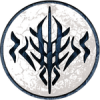
Parshendi, the return of KR, and humans on Roshar
FirstSelector posted a topic in Stormlight Archive
First and foremost, I have been away from the forums and the cosmere in general for some time, so my sincere apologies if I am repeating ideas and theories without correctly citing them. That being said, I have had a lot of catching up to do and so hopefully I can start to contribute usefully. I was reading various theories and I started to wonder if the history of Roshar was even less clear-cut than we might have otherwise assumed. In particular, agrooster proposed a theory in which humans are not the native species to Roshar. In particular, the theory claims that due to ecological differences (chitaneous vs mamallian), Parshendi are the native sentient species and the history of wars with humans was in fact the "Desolations." This theory appeals to me since there was a recent quote (which I cannot place now) that essentially said "other nearby planets have influenced Rosharing mythology," specifically referring to the Tranquiline Halls. Note that Rosharians believe they were brought to Roshar from this place. I then did a cursory poking-about (which almost certainly missed things, and my apologies to others who have written on this subject) and noticed this theory which almost assuredly shows that the dark sphere has an Odium-corrupted spren trapped in it. I think there is very little wiggle-room available with what we know to contest this idea. So, with credit to those theorists and my continued apologies to those I have missed, I propose the following idea: The Parshendi killed Gavilar because he proposed to reinstate the Knights Radiant. Let us start with some founding arguments: Sadeas claims that Dalinar is starting to act like Gavilar in his final days. We attribute this to The Way of Kings, which we know is basically a blueprint for the Knights Radiant. Perhaps Gavilar leapt the chasm that Dalinar required Tanvast to throw him across, namely the importance of the Knights Radiant. A key point here is not specifically the Knights themselves, but instead the existence of such an order. I make the following claim: the existence of the Knights Radiant is somehow tied to the Oathpact. Even if the KR were not extant when the original Oathpact was laid down, it could be that their existence somehow fullfilled a clause that prevented further Desolations. This assumption is somewhat justified, since there hasn't been a Desolation since the KR disbanded and might provide insight as to why they abandoned their orders. "If it walks like a god and quacks like a god, it's a god." The Parshendi "gods," as they were, are not Shard-level powers, but instead a group of entities that can force the Parshendi to their will. Suppose, for contradiction, that the Parshendi are aware of the Shards of Adonalsium. They would then know that the reconstitution of Honor (or another Shard) is a very complicated process. Thus, they cannot mean literally that Gavilar will bring back their gods. We then assume that they mean gods in the sense I indicated. I agree with agrooster that the Parshendi culture is very much more like the ideals of Honor than that of the humans. This would suggest that they were originally created by Honor, or at the very least shaped by his existence. This is not to say that Honor was more protective of the Parshendi as compared to humans. Note that the Parshendi took credit for killing Gavilar, knowing full well that they would be hunted to the ends of the earth by the Alethi (see below). So how does this all tie together? Supposing what I and others have proposed is true, events proceed in the following way: Roshar (with its highstorms) is settled by Honor, and then there are Parshendi. Some time later, either due to Honor, Odium, or some other force, humans arrive on Roshar. Odium notices, and in an attempt to be odius, corrupts some spren. These corrupted spren then bond with Parshendi (possibly unilaterally) and cause them to go on mass murderous rampages against the humans. Honor is really not too pleased with this turn of events, and strikes a deal somehow with the Heralds, Odium, and possibly additional parties. They forge some divine agreement that regulates these Desolations in ways we don't yet fully understand. In particular, I claim that Honor (or his executor) gets the Knights Radiant/Heralds if and only if Odium gets to corrupt Parshendi (Voidbringers)/ten leaders of Voidbinders. Now, this didn't work out so well for any of the parties involved. In particular, the Heralds have fallen from grace and Tanavast is dead. However, Odium hasn't been able to outright destroy the world, and his Voidbinders are gone from all but legend. What if this is the direct consequence of the loss of the Knights Radiant? Perhaps the Oathpact prohibits the existence of Voidbringers (i.e. corrupted Parshendi) if there are no equivalent opposing forces? (Note that this system still admits an "Odium wins" solution, through infighting on the humans side and some unspecified looming threat.) The Parshendi realize this, of course, and kill Gavilar to prevent him from accidentally giving Odium free reign to take over their people again. They are willing to die for their cause en masse because the alternative is so much worse. Note that any theory for why the Parshendi killed Gavilar must satisfy this criterion, since they knew the consequences of the assassination. As a final aside, this might shed some light on what Natan is proposed (in the above theory) to be running around killing Surgebinders. The realization by any number of parties that Surgebinding is only forgotten, not lost, would prompt them to recreate the Knights Radiant in some guise. It might only be a school of medicine that utilizes Growth, but this might satisfy whatever requirement that the Oathpact demands to allow Voidbringers. Closing thoughts: This would make for a somewhat interesting dynamic in the story - to prevent the creation of new Voidbinders, the Parshendi have driven the Alethi to war and accidentally prompted the reinstatement of the Knights Radiant. In maybe the cruelest twist of fate I can imagine, what if Odium himself motivated Gavilar to The Way of Kings so that he could attempt to reinstate the KR and thus let the Voidbringers wash over the world. My apologies for the rambling writing and any unattributed theories - feel free to let me know so that I can credit your ideas. Thanks for reading!- 22 replies
-
8
-
- gavilars death
- origin of man
-
(and 2 more)
Tagged with:
-
One of the mysteries presented to the reader in the prelude to the Stormlight Archive is the nature of the Oathpact that is broken by the Heralds. A possible reason behind this pact occurred to me recently and it relates to a particular well known story from the Bible, the story of Job. To those not familiar with said story: Job is a very prosperous man who is both righteous and pious. God is very proud of Job but Satan claims that Job is only righteous because he is so sheltered. Satan wagers with God that if he were to take everything away from Job then he would not be so pious. God takes the wager and allows Satan to do what he wants short of taking Job's life. Satan tries everything but fails to get Job to curse God. The possible parallel with the Oathpact lies in the deal between two deities with people caught in the middle. In the Almighty's last message to Dalinar he says that it might be possible to get Odium to choose a champion. This implies that it is possible in some circumstances to make deals with Odium and so it might not be ridiculous to conjecture that deals have been struck in the past. There is also precedent for deals between two opposing Shards in Brandon's other Cosmere books. If the Almighty is Honor as many suspect then maybe Honor and Odium made a wager on whether humans could be broken and made to discard their honor for selfish reasons. This would explain why the Heralds had to endure torment between desolations, this was a test of how long they could last. Furthermore, if Honor and Odium made this deal then, presumably, a lot rode on the outcome. Possibly even the fate of the Shards and of Roshar itself. If this was the case then that would mean that 9 out of 10 Heralds forsaking the Oathpact would deal a crushing, possibly fatal, blow to Honor. I have seen it noted that, curiously enough, the Heralds don't mention Honor and only mention the Almighty in passing. Comparing this to the story of Job then this might mean that the Heralds were unaware of this wager and only thought that they were defending humanity from the desolations when the real battle was for their virtue. This only just occurred to me and I couldn't find any mention of this parallel being drawn anywhere so I decided to post it. I hope I'm not just reposting something that has already been discussed.
-
Ok, so this is a little extra speculation based on the new information that Honor was suprised by the formation of the KR and that the Heralds were a little bitter with Honor and blamed him for their situation. ((Note: I have not heard the reading, only seen this talked about on the boards so if I have misinterpreted, please let me know)) This theory makes the assumption that the KR only fought in 1 Desolation (the one that ended in the Prologue to WoK). Obviously I have no evidence of this as we do not know exactly when or how the KR were formed. Basically the assumption is that Dalinar's vision of Nohadon is after the end of the desolation before the one ending in the prologue. In the intervening years, Nohadons writes his book and might (or night not) do some vajazzle with a dawnshard to bind surgebinders to oaths. Ultimately the KR are formed in time to fight in the 'final' desolation. Now, my basic theory goes like this: The Heralds have been dying and being tortured for uncounted generations and are quite bitter about it. They blame Honor (at least partially) for putting them in their current situation. However, generally they know their duty to mankind. Then they return for the desolation and find (much to their suprise) a highly trained, fighting fit, surgebinding paramilitary group ready and willing to fight with them against the forces of darkness. Suddenly the prospect looks less bleak and a crack of hope rises. They start to think that they may finally defeat the enemy. IIRC Kalak comments that despite the fighting being more fierce, less of them (Heralds) died this time. I think Jezrien even argues that the KR will be sufficient in the future. So I think it was (at least in part), the presence of the KR that led to them abandoning their blades. It is one thing to sacrifice your soul and body to defend a nation of farmers who would otherwise be wiped out. Another to do it for a nation of farmers defended by an elite military group. Maybe this is not really new, but for me the information that the Heralds were blaming Honor is really interesting. How must they feel now? Knowing that their actions probably led, ultimately, to his death / splintering!? ((Note, I am not saying there is a direct causal link, but I bet that is how the Heralds feel))
- 12 replies
-
1
-
Hi there! I searched and couldn't find a topic relating to this, but if I'm reposting I apologize in advance. Wit's comments during Taln's reappearance have been bugging me for some time. Taln says "The Desolation has come. It has come, oh God and I have failed." Wit replies ends with" you my friend may have come to late." My understanding is that the Heralds coming marks the beginning of a Desolation. Why then would he be considered late by Cosmere-smart Hoid? My gut feeling says it has to do with the abandonment of Taln. My real question for everyone is how often do Desolations occur? I can't remember where, but I recall reading that they come at regular intervals but are always unexpected. I take that to mean every 50 years (or 100, number is irrelevant) one can occur but not will occur. Ahharetium(sp?) Happened 4500 years ago, and it was #99. Are we to believe this cycloe has been happening for 450 thousand years? The primary difference between Desolation #100 + #99 is the Heralds abandonment. I don't include the KR as I consider them more of an elite fighting force. The Heralds go somewhere between Desolations and elected not to. Die to our ignorance of the Oathpact I am forced to hypothesize that in place of a "relay" with 10 Heralds, Taln pulled an iron man style "marathon" which took much longer than it was supposed to. Possibly giving Odium the needed to prepare a final assault. Thoughts? Tangents?
-
In WoK, we encounter three types of Shardblade: Honorblades - Owned by the Heralds who are bound by the Oathpact. Doesn't turn owners into Lighteyes. Disappears when owner dies. Seems to be permanently bound to the owner. Can be summoned from thin air. "Radiantblades" - Once owned by Knights Radiant. Now owned by a number of Lighteyes. Appears when owner dies, and can be taken by another person. Can be summoned from thin air. "Truthlessblades" - Found in Shinovar. Owned by Shin warriors who become Truthless and therefore honor-bound to follow the bearer of their Oathstone. These blades light their owners' eyes, but only while being held. Can be passed to another owner when the current owner dies. Can be summoned from thin air. These blades have a few things in common. For one, they can all be summoned. I'm assuming Honorblades also require ten heartbeats before appearing, just like the other two types. Also common among these blades are their magical cutting and killing abilities. Whatever else they might be, all Shardblades are deadly weapons. Here's the story behind the theory I'm about to discuss (in spoiler tags since it's not really necessary): So let's start. All things in Roshar have spren, which I believe are Cognitive entities on Roshar that have "wavefunctions" and that might (though not always) be visible. We've already seen spren that have something to do with one of the Shards: Honorspren, spren who are attracted to honorable people. Honorspren are special because they grant powers even without being "trapped" in a fabrial. The powers that Honorspren grant all have something to do with binding things together. My theory is about a spren for another Shard on Roshar: an Odiumspren. I think Odium has a Shardic Intent that is the opposite of Honor's. Simply put, Odiumspren would grant people the power to divide things. What magical entities have we seen on Roshar that can divide things very, very well? Why, Shardblades, of course. That's why I think all Shardblades (including Honorblades) are Odiumspren. *** start of wild, base-less speculation *** The ten heartbeats requirement is a clue. From Geranid the Ardent, we know that spren have quantum dynamic properties. I think Geranid's Interlude chapter was meant to show us that spren "wavefunctions" collapse in the Physical realm when certain measurements are made. For flamespren, just measuring the size already makes them stop changing size, shape, and luminosity. Counting ten heartbeats is another act of measurement, and combined with an intent to summon, I think this collapses the wavefunction of an Odiumspren bound to a person, making it appear in the Physical realm as a magic sword. Honorspren like Syl don't really make people more honorable, but instead reward honorable actions with power. Similarly, Shardblades/Odiumspren don't really make people more hateful or selfish, yet once a Shardbearer starts feeling odious emotions, killing suddenly becomes a lot easier. This "odium-based enhancement" is what Szeth experiences whenever he becomes particularly angry with an assassination target, and it's possibly connected to the Thrill felt by the Alethi in battle. I think Odiumspren feed on odium to boost Szeth's Lashing ability, the same way Syl feeds on Kaladin's honorable acts to boost his own Lashings. And it doesn't even have to be in sword form. Looking back at the assassination of King Hanavanar, Szeth was even more deadly when he started irrationally blaming the king for his own actions, even though he let go of his Shardblade mid-fight. I think the Odiumspren bound to him was still powering his hatred even in its non-collapsed form. One apparent difference between Shardblades and Honorspren is that Honorspren are sentient and humanoid while Shardblades are not. I'm speculating that the sentient (probably humanoid) part of Odiumspren only manifests in Shadesmar, and that it is this aspect of the Odiumspren that feeds on the odious thoughts of people. I believe we'll be seeing the "true" form of Odiumspren once the characters start travelling around Shadesmar in future books. Also, you know how the Heralds were tortured in between Desolations? I think I know who the torturers were: the true forms of their own Honorblades. *** end of wild, base-less speculation *** So, that's my theory. Later I would like to theorize further on why the Honorblades were thus named, why Szeth isn't a permanent Lighteyes, and why Hoid claims that Lighteyes have a "good reason" to rule. But first I want to see if my main theory contradicts what we already know from WoK or WoB. If there's a major flaw in the theory, please point it out right away. Edit: Since my speculations and arguments regarding this theory span multiple posts, and since some people gave interesting arguments against the theory, I guess I might as well link to those: Speculation: The nature of Voidbinding, Honorblades, the Oathpact, and the founding of the Knights Radiant Speculation: The history of the genetic Lighteyes effect, and why Szeth isn't Lighteyes Counter evidence: Szeth isn't bound to a spren Counter evidence: Different spren are either from Honor, Cultivation, or both Counter evidence: Amaram's Shardblade has a gem on its pommel Counter evidence: Shardblades don't always need ten heartbeats to appear Counter evidence: Brandon likes Shardblades A summary of things explained by the Shardblades are Odiumspren theory Further similarities between spren and Shardblades Edit: I still think that Shardblades could be spren, but since some people seem absolutely convinced that they must be Physical objects, I'm going to offer a compromise by proposing instead that Shardblades are objects powered by odiumspren (which would reside in the gemstone attached to them).
- 100 replies
-
1



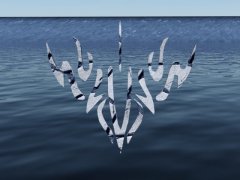
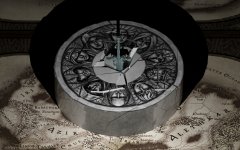
(187x200)(94x100).jpg.2cc51a32db34fd541e7fa894f28ebbfd.thumb.jpg.f6e7f91e31e84c4c9375ba9866dd668f.jpg)
.jpg.6472fdc5897dc4579f5d611eebd4cd79.thumb.jpg.e85f1fc916f707bd145be44cd0f8f760.jpg)
